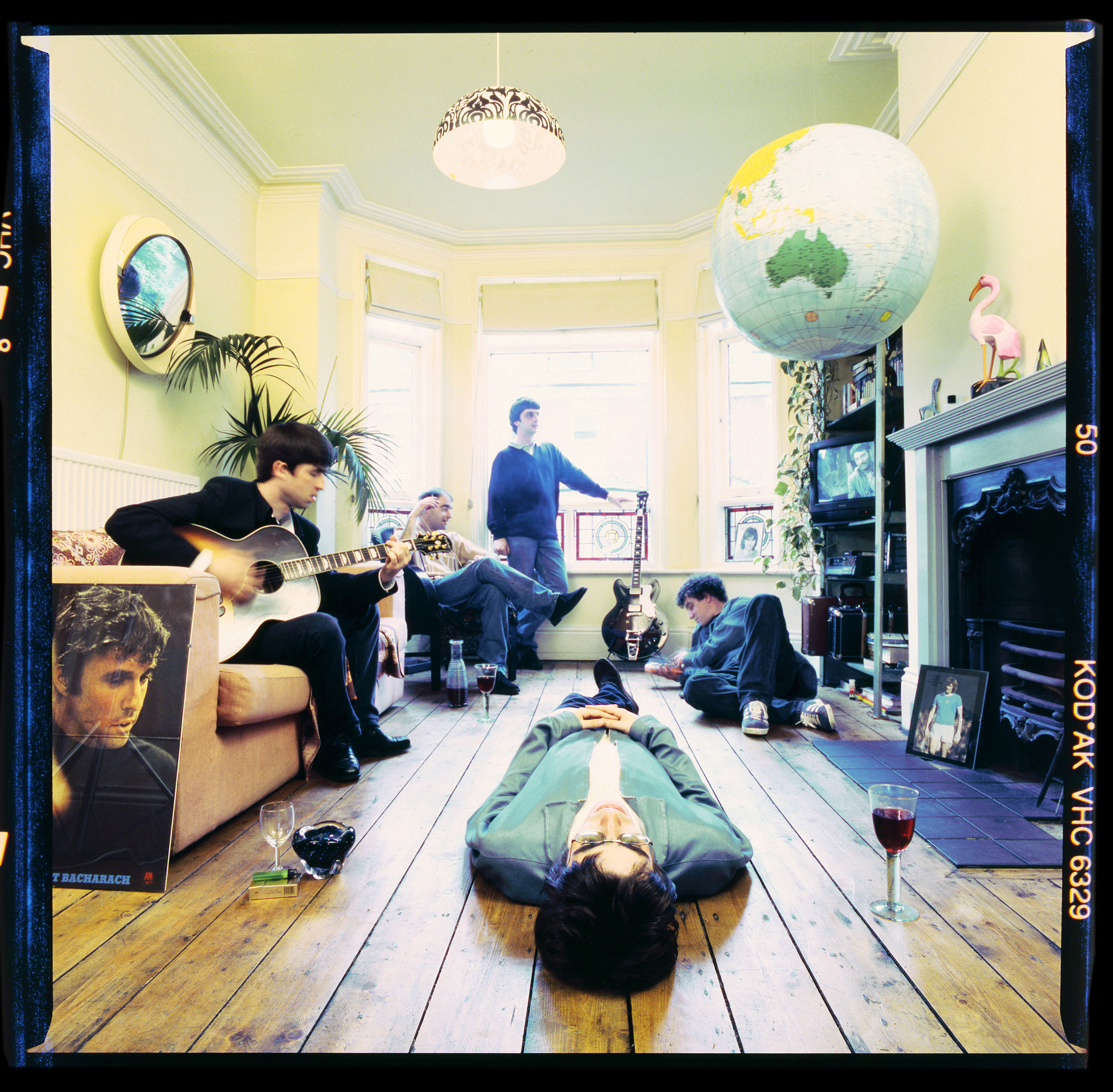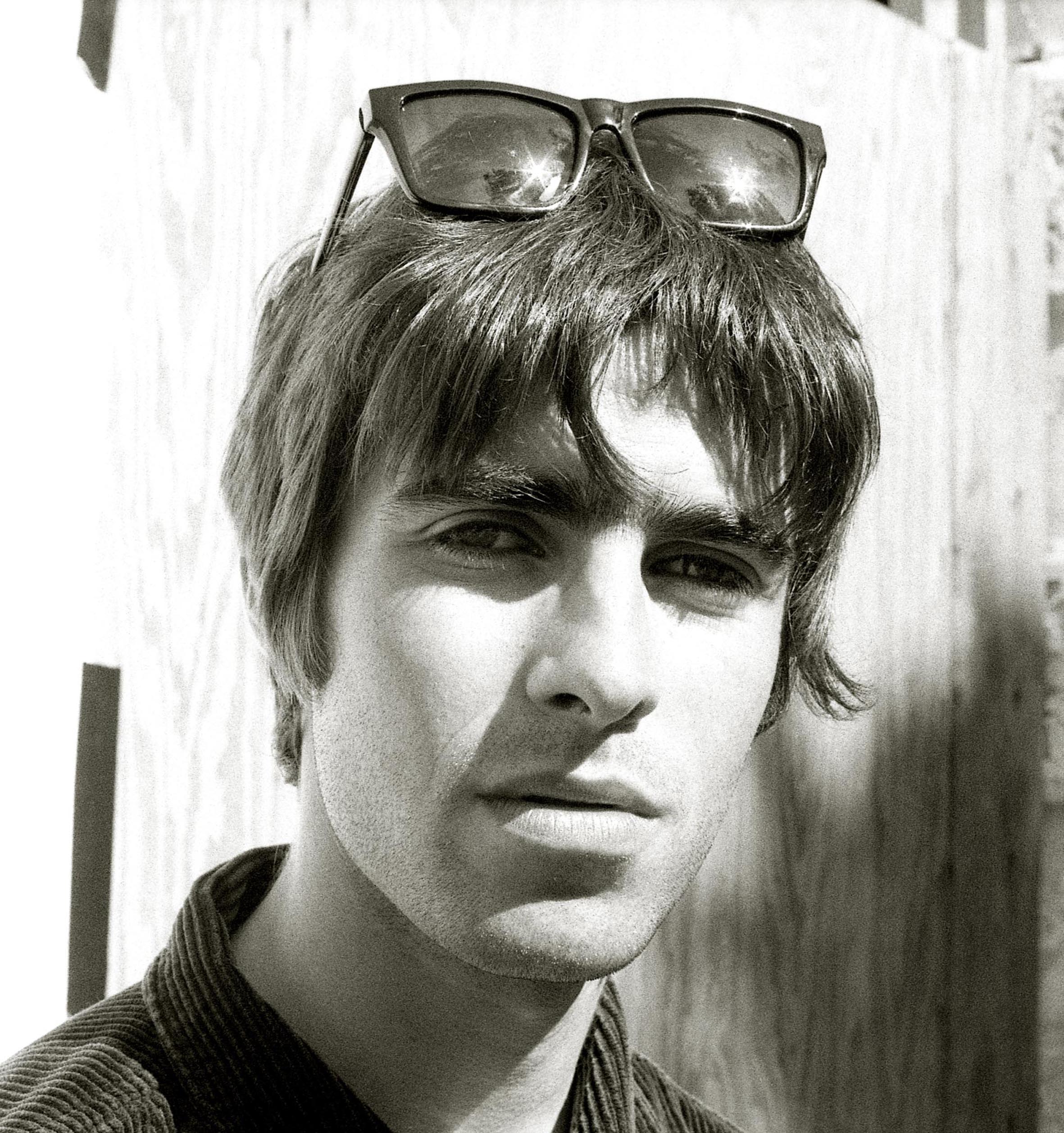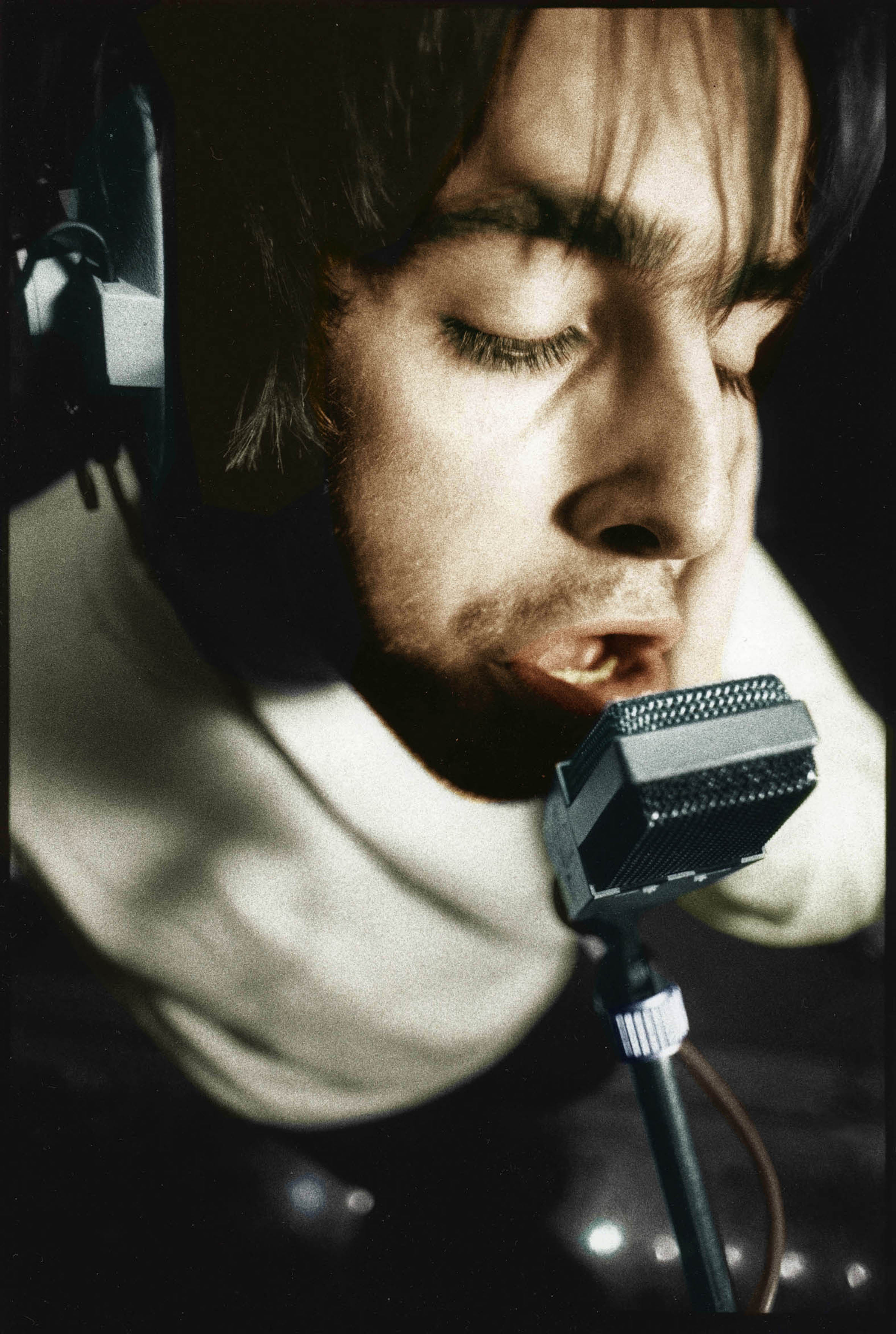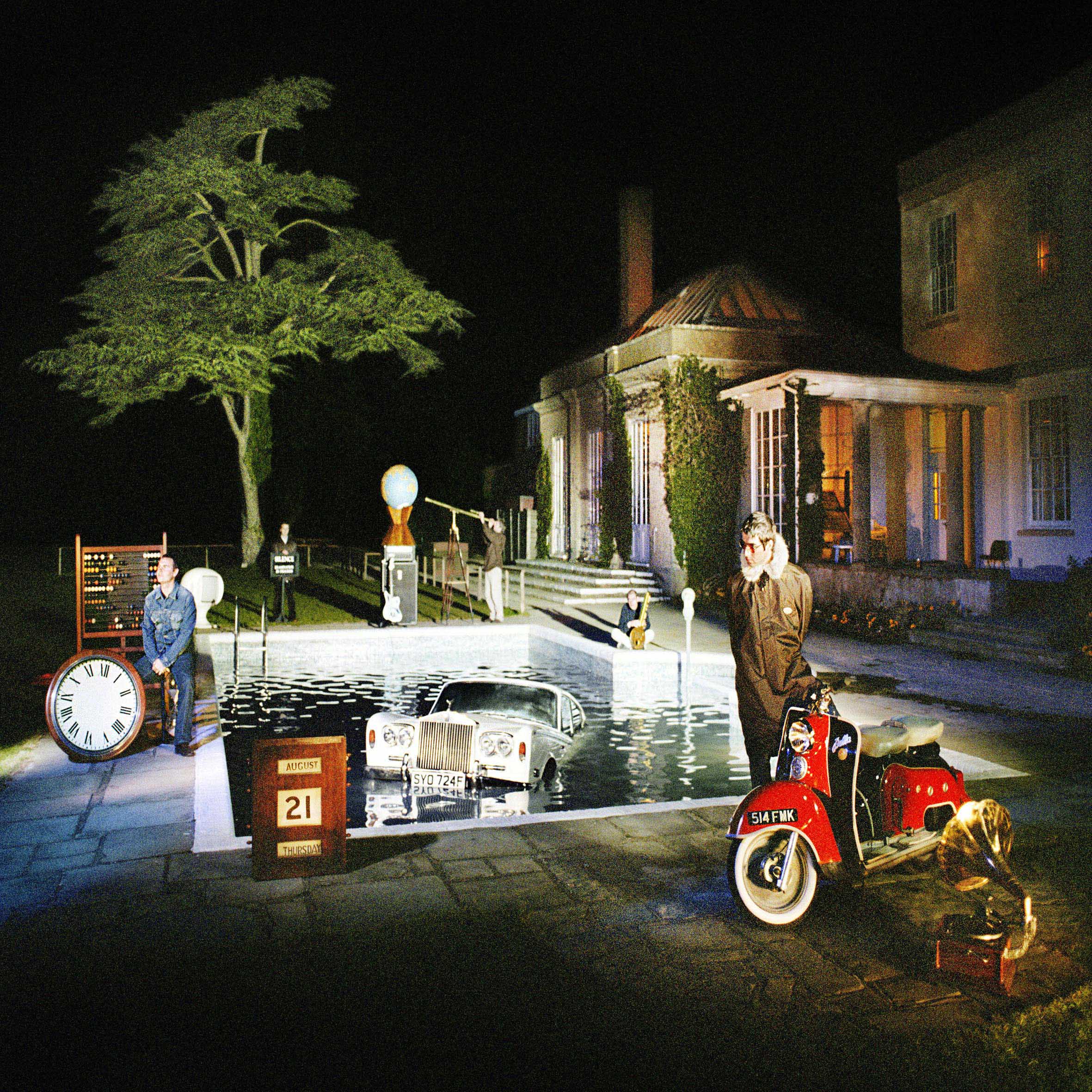Everything

ICON: How long has it taken to build an exhibition of this size?
Michael Spencer Jones: “The whole logistical thing has taken a few months. Planning, getting the venue, selecting the artworks and then you’ve got to do the edits and we have art installations going in as well. So a lot of hard work really. When you walk in the room, it looks complete, but I don’t think people fully realise the work. It’s like doing a wedding. That’s the level of work and effort required.”
Talk to me about the weeks and months before you started capturing Oasis in those early days. Did you ever imagine that you’d end up in that sort of role?
MSP: “No, it’s very difficult to turn work down and if you follow your instincts and take on commissions you want to take on, then eventually it will steer you on some kind of path I suppose. When I moved to Manchester, I naturally – I like music, I like taking photographs, portraits – naturally, I gravitated towards those kinds of people. When I was at college, I liked [capturing] still life and constructing a photograph and a lot of the cover material for Oasis, the covers, they’re carefully constructed shots. Very large still life basically.”
What is your personal favourite Oasis track?
MSP: “It would have to be ‘Columbia’. It’s a very sleazy, dangerous, dirty, rock ‘n’ roll track that ‘Columbia’. It’s like [a] brooding storm – storms are quite exciting things – electricity in the air and that strange eerie light. ‘Columbia’ reminds me of that. But there’s quite a few to choose from.”
Can you recall the chaos that happened on the set of the famous ‘Wonderwall’ shoot?
MSP: “I think that’s been, I did an interview and it has been completely misconstrued. That’s not how – I don’t want to perpetuate any myths – but there was no sort of friction between them on the shoot. That’s been twisted actually.”

You toured extensively with the band. Is there anything about touring with a rock band in the ‘90s that people might find surprising?
MSP: “It’s great fun, there is a great sense of freedom. But I think what people would find surprising is that [the band] were under a lot of pressure. I can remember being with Liam, we were in London and we’d been out the previous two nights and I just wanted to go home to bed, I was absolutely shattered, and Liam said, ‘It’s alright for you, I’ve got to walk on stage and perform for 8,000 people.’
“And suddenly you start to understand the kind of pressure these people are under.”
People tend to see this glamorous surface of it, but you know, can you imagine if you’re not feeling your best or your feeling tired and suddenly you’ve got to get your act together to perform in front of 10, 15, 20,000 people that’s a big commitment, it’s a lot of psychological pressure. Of course, it’s a great job, but there is a lot pressure in that because if you don’t perform you’re going to let a lot of people down. And I don’t think people quite understand… There is a tendency to over-glamourise that pop lifestyle. A lot of these bands work really hard, in the studio, very professional output really. They knew how to party but they knew how to work. They are artists first and foremost. My overriding impression with Oasis is a good vibe, and there was a lot humour.”
Do you think it was that family bond between Liam and Noel that made the band so successful?
MSP: “Absolutely, yes. I can remember when I first started working with them and someone pointed out that this a band with two brothers in it so it’s not going to be, it’s going to create a dynamic in and of itself. And the fact that there was that sibling friction, and that just made it right. Most of it was good humour, only occasionally would it get a bit heated. But there was always that element there that created that dynamic. With any artist, it’s that fault line that creates humanness. It’s about humanity at the end of the day.
The thing with Oasis, they were like the ‘anti-role model’. The music of course, the minute you listen to the music, you become a part of that world for sure.”

Do you believe the internet and the digital age was why great rock ‘n’ roll seemingly diminished?
MSP: “I don’t think it’s coincidental. It’s just come from the culture. The analogue age seemed to end around ’97, ’98. Before that the world was less complicated. The world is too complicated now, there is too much noise and we don’t know how to turn it off. If you turn it off, you get turned off at the same time. At one point, everyone was in a band, everyone was walking around with a guitar, everyone was writing music and now that’s gradually stopping.
“I genuinely think that Oasis were the last great rock ‘n’ roll band.”
That’s the danger with the digital age, we can’t survive without it. Oasis were like the last gasp of air from the analogue age. We thought the internet was an access point to free information, it’s far from that… Our lives are being controlled by the internet. Back in the ’90s, you could live outside the matrix and all those people were living outside the matrix and living quite successfully.”
How did Oasis differ from any other band that you’ve photographed?
MSP: “All musicians are pretty cool people to hang out with. Musicians are pretty genuine and authentic people. Oasis had this complete self-belief, there was no fear. It wasn’t arrogant, they just had total self-confidence and they really didn’t give a f**k what you thought, or anyone thought…”
What did a standard day look like for you?
“The only routine was that there was no routine.”
MSP: “That’s the interesting thing about being a photographer. Just being with Oasis, anything could happen at any time, you never knew from one day to next what was going to happen. Which is exciting, it just felt really alive.”

Is it safe to assume you have more unseen images from your time with Oasis? Will we see more releases like this in the future?
MSP: “I have a few I’m sitting on. I’ve got a massive archive that I haven’t got to print or scan – everything I have shot is on film. I keep coming across shots, and in fact, the signature image for the exhibition, of Liam, I only came across that six months ago. So that’s been vaulted for 20 years and all of sudden its time has come.”
When you come across photographs like that, can you pin point the exact time you shot it?
MSP: “If it’s a gig, sometimes I can, sometimes I can’t. I’ve kept quite a good diary, a working diary when I did shoots. But the ‘Wonderwall’ shoot, I was trying to find out when I took that, it was either August or September, and I was like right, it must’ve been August but there were a lot of leaves on the ground for August and I looked at my book but it said August. I can do the year, but sometimes I struggle with the month they were shot in. Generally speaking I can pinpoint when they were shot.”
Masterplan 25 – Michael Spencer Jones – Iconic & Unseen Photographs of OASIS is now on exhibition at h Club, London until January 12, 2020. For more information, visit here.
Masterplan25 – Michael Spencer Jones – Oasis Exhibition
Venue: h Club Gallery, 24 Endell Street, London, WC2H 9HQ
Date & Time: Friday 22nd November 2019 – Sunday 12th January 2020 – 11am – 6 pm including Sundays. h Club will be closed for the festive period on 24th, 25th, 26th and 27th December.
Price: Free of charge & non ticketed
Cover Image: Liam by Pool – Stocks House 1997 © Michael Spencer Jones